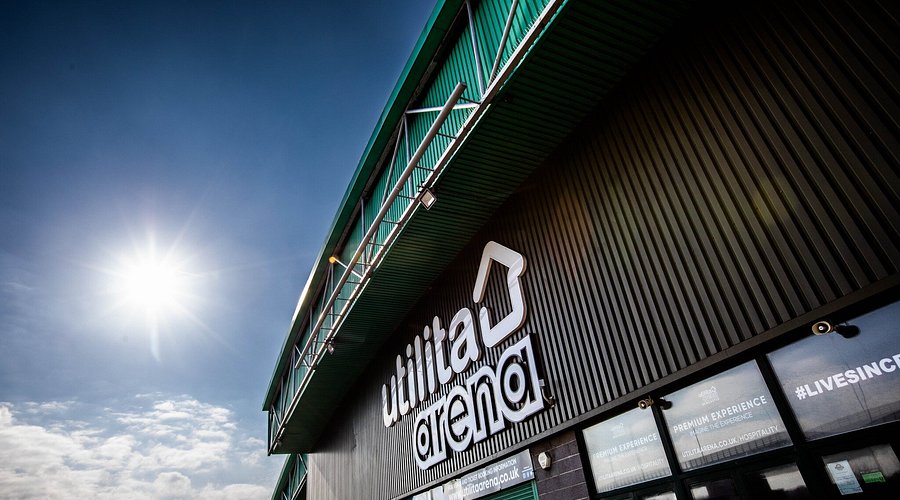Origins and Historical Background
Utilita Arena Newcastle opened its doors on 18 November 1995, originally known simply as the Newcastle Arena. The concept was born from a collaboration between former Animals musician Chas Chandler and his business partner Nigel Stanger, together with support from corporate finance expert John Wall. Conceived to fill a gap in major touring venues in the North East, this project enabled the region to attract headline-worthy acts that had previously bypassed Newcastle due to limited capacity venues.
The first event hosted was a basketball game featuring the Newcastle Comets against the Doncaster Panthers. Shortly thereafter, in December, the venue welcomed the very first concert, commonly attributed to David Bowie—a milestone that cemented the arena’s immediate cultural prominence.
Over time, the arena went through a series of naming rights: it became the Telewest Arena in 1997, then the Metro Radio Arena in 2004, and eventually assumed its current name, Utilita Arena Newcastle, under a sponsorship arrangement with Utilita Energy.
Architectural Design & Capacity
The arena is strategically positioned on the south-west edge of Newcastle’s city centre, near the River Tyne and adjacent to the Redheugh Bridge. It benefits from excellent road and rail connectivity.
Designed by the Ogden Corporation at a cost of approximately £10.6 million (partly financed by a grant from Tyne & Wear Development Corporation), it was a significant investment in the region’s cultural infrastructure.
Key specifications include:
- Concert seating capacity: around 11,000 (some sources cite over 11,400)
- Basketball capacity: approximately 6,500
- Ice hockey capacity: around 5,500
- Exhibition/conference space: roughly 40,000 sq ft (3,700 m²), with additional adjacent outdoor exhibition areas around 36,000 m²
- Corporate lounges: two lounges each accommodating about 100 people
- Parking: a secure on-site facility offering over 600 spaces with CCTV and patrols
The arena’s flexible, open-span layout allows it to be reconfigured for a diverse range of event types—from concerts and sports to exhibitions and conferences.
Events & Cultural Impact
Utilita Arena has hosted an impressive roster of concerts featuring global icons like Elton John, Kylie Minogue, Pavarotti, Sir Cliff Richard, Tom Jones, Shirley Bassey, and Neil Diamond, among many others.
Its sports event lineup has included attractions such as Davis Cup tennis, Nations Cup snooker, world championship boxing, and WWE live shows.
On the performing arts side, the stage has welcomed lavish productions like Mamma Mia!, Riverdance, Lord of the Dance, Disney on Ice, and Les Misérables. It has also been the site for audition stages of The X Factor, including appearances by James Arthur.
The venue served as the original home for professional sporting teams: the basketball team Newcastle Comets, later rebranded as the Newcastle Eagles, and the ice hockey teams such as the Newcastle Cobras and Whitley Warriors. However, both teams relocated—Eagles to Northumbria University’s Sport Central in 2010 and the Vipers to Whitley Bay Ice Rink in 2009.
It also facilitates major conventions, such as the annual regional convention of Jehovah’s Witnesses, drawing around 7,000 attendees each year.
Access and Experience
Visitors benefit from excellent transport links—just a 10-minute walk from Central Station and served by various local bus routes and the Tyne & Wear Metro. The venue is also very accessible by car, being close to the A1(M) and equipped with its own parking facilities.
Accessibility is a cornerstone of the venue’s guest experience, with protocols in place for wheelchair users and ambulant patrons. The arena also provides clear guidelines on guest items, prohibiting large bags, professional cameras, and outside food/drink for safety and event integrity.
Premium experiences such as VIP lounges, early entry, and hospitality upgrades are available, enhancing the overall spectator experience.
Recent Renovations & Current Upgrades
As the arena approaches its 30th anniversary in 2025, a significant renovation project worth £1.75 million has been initiated. Based on plans coordinated by general manager Caroline James, these upgrades span:
- Revamped backstage and artist areas, aimed at attracting higher-profile acts
- Renovation of restroom facilities
- Enhanced suite-level VIP areas for elevated guest experiences
- Expanded front-of-house food and beverage offerings, moving to more engaging and modern concepts
Future Context: The Sage Arena
Looking ahead, the venue’s future is tied to the upcoming development of the Sage Arena on Gateshead Quayside. Planned as a replacement, this new arena will have a capacity of around 12,500, scheduled to open between 2025 and 2027, though the timeline has slid into possible 2027 delivery.
Once operational, it is expected that Utilita Arena will cease operations, and the site may be repurposed within the broader Forth Yards regeneration framework—potentially for housing, office, or mixed leisure developments.
Local Sentiment & Acoustical Critique
Local voices on forums like Reddit offer a mix of praise and criticism. While some lament that touring big bands sometimes skip Newcastle, others highlight issues like acoustic quality, describing the venue as having challenging sound characteristics—comparable to performing inside a “tin shed”—despite its primary purpose as a live event space.
Summary & Cultural Significance
For nearly three decades, Utilita Arena Newcastle has stood as the North East’s premier entertainment venue—an architectural and cultural landmark on par with the Tyne Bridge or the Angel of the North. It has consistently brought world-class performers to regional audiences while serving as a flexible host for sports, exhibitions, and large-scale conferences.
Today, it remains a key part of Newcastle’s live event ecosystem, evolving with upgrades and enhancements to stay relevant. As the city prepares for the next generation of entertainment spaces—such as the Sage Arena—the legacy of Utilita Arena will endure as an essential chapter in the region’s cultural narrative.

